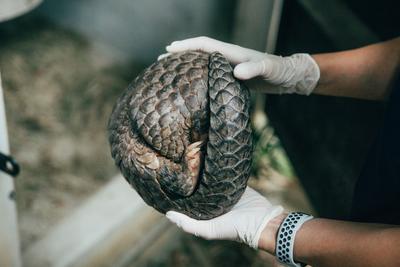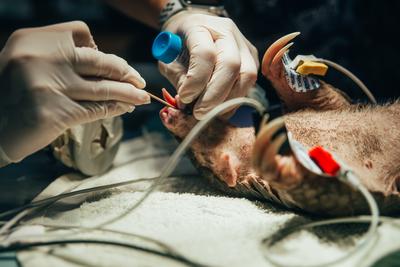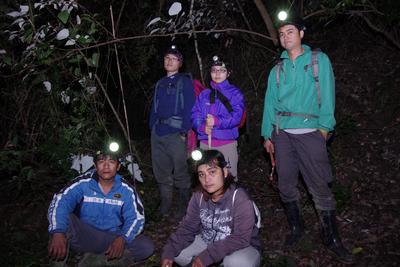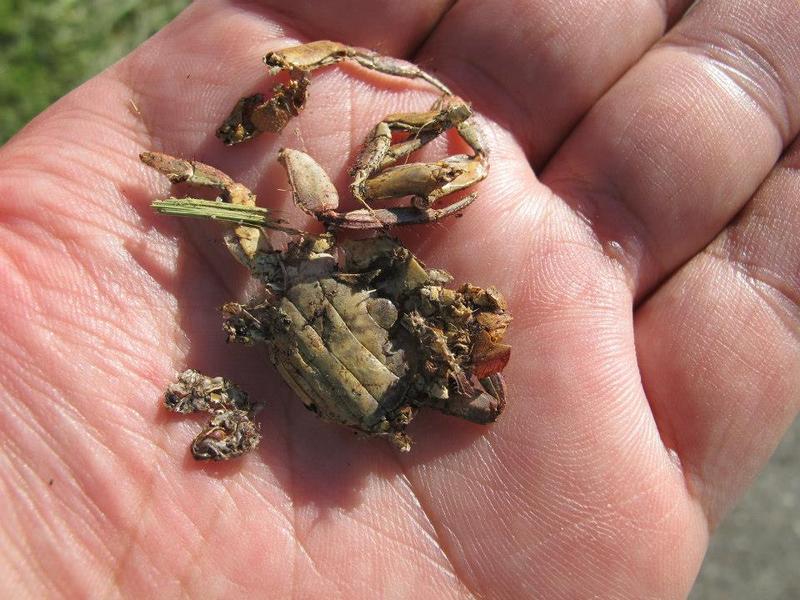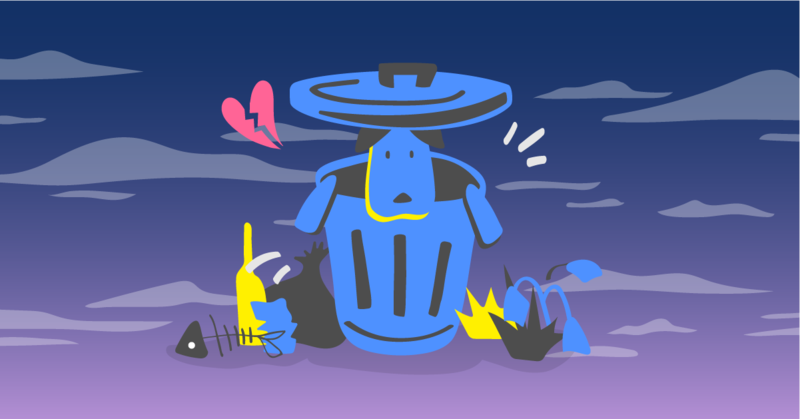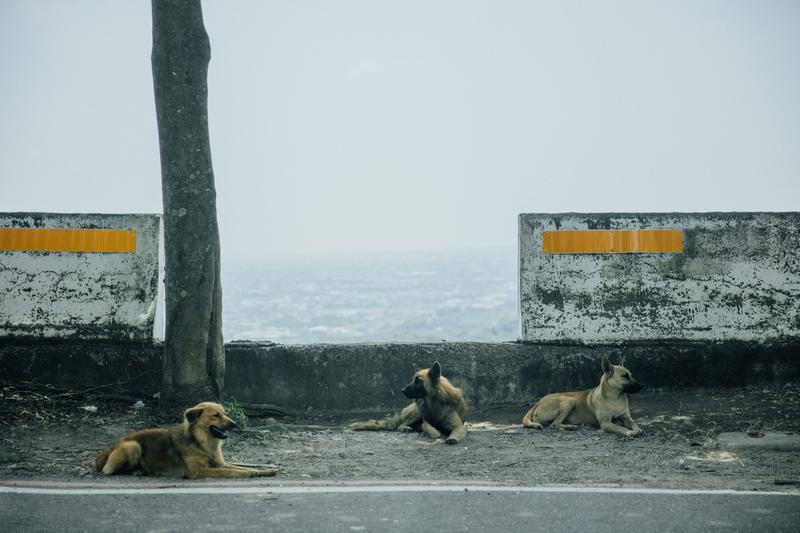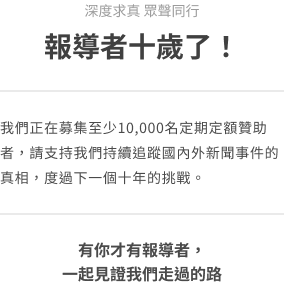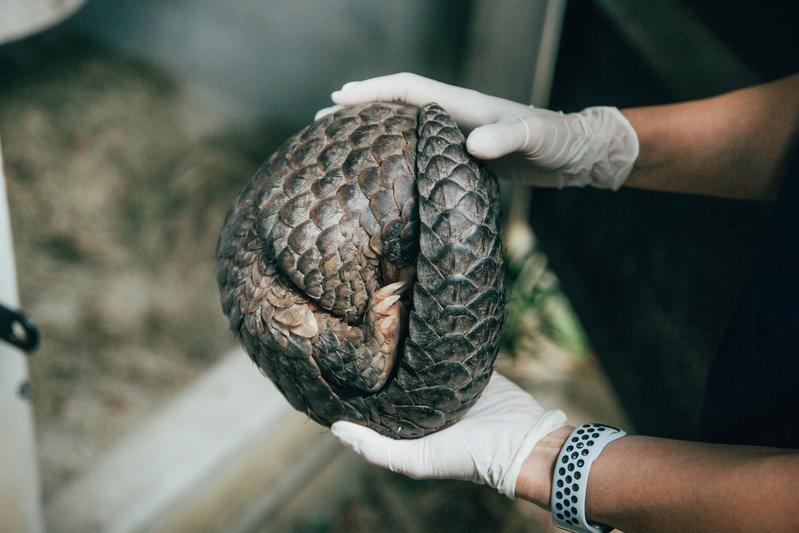
One million pangolins have been illegally trafficked in the past decade, according to the Trade Record Analysis of Flora & Fauna in Commerce (TRAFFIC). Listed as a “critically endangered” species on the International Union for Conservation of Nature (IUCN)'s Red List, pangolins are now threatened with extinction.
While pangolin populations are declining worldwide, Taiwan is likely the last conservation ground for the scaly anteaters. The current population density of Taiwanese pangolin is probably among one of the highest in the world, according to a study conducted by the National Pingtung University of Science and Technology (NPUST).
Just half a century ago, Taiwan was exporting 60,000 pieces of pangolin leather per year, almost pushing the entire species to extinction. In the past 50 years, how did Taiwan transform itself from a hellscape for wildlife animals to the world's last safe haven for pangolins?
"Look, here's a hole… and there's one. Oh, here's another," says Yuan Tsung-Cheng (袁宗城) as he stops his car on the main road of Luanshan to go on a "scavenger hunt." He is able to spot three or four burrows within minutes, and he would gently push the weeds aside from the entrance to confirm if the guests have checked out. These are the burrows dug by pangolins to prey on ants.
A former chief police officer in Luanshan, Yuan has been the mastermind behind the town's pangolin conservation effort since 2007. With his persistence, Luanshan is now one of Taiwan's most important communities for protecting pangolins and their habitat. Even NHK Japan has once made the pilgrimage to this small town in Taitung to interview the locals.
Pangolin is a globally endangered species. But in Luanshan, almost every resident has seen pangolins. "We call them 'The Treasure of Luanshan'," Yuan says with a prideful smile.
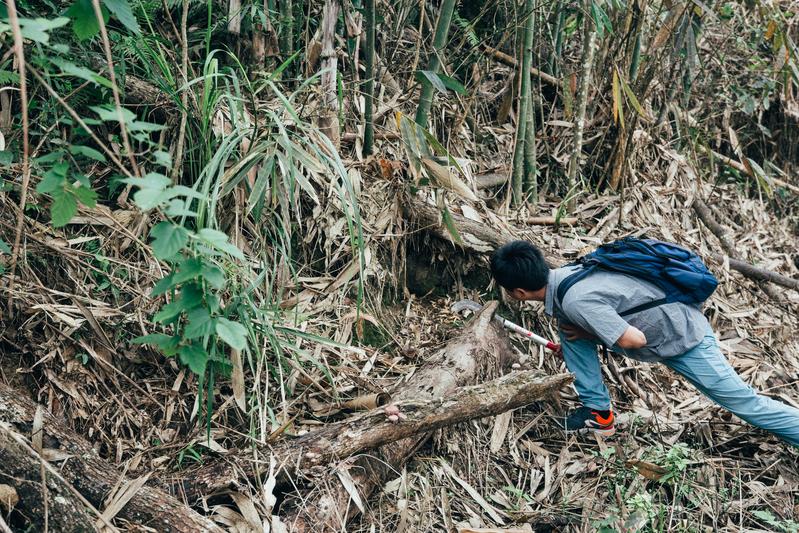
The Treasure of Luanshan, however, was only valued as a commodity just 50 years ago. Between the 1970s and 1980s, Taiwan was a torturous hell for pangolins: 60,000 of them were hunted each year and they have been on the edge of extinction ever since.
Of the 8 pangolin species, the one residing in Taiwan is named the Chinese Pangolin. It is the only mammal covered in hard scales, with a body length of only 50 cm and tail length of around 35 cm, much like the size of a cat. Its figure with a tiny, pointy head resembles an enlarged, scaly rat.
The pangolin's unique appearance and its nocturnal and burrow-dwelling characteristics have masked the species behind a mysterious veil, but also precipitated its tragedy. Many Chinese believe that pangolin meat promotes blood circulation and its scale helps enhance lactation. Human desires have subjected pangolins to be the most trafficked mammal in the world, surpassing rhinos and elephants.
In the 1950s, the most popular commercial use for pangolin was neither its meat nor scale, but its beautiful skin. Taiwan was an internationally recognized exporter for pangolin leather at the time.
With the advantage of a booming economy in the post-war era, the Taiwanese government pushed for the development of light industries, including leather production. Because of its durability and elegant texture, pangolin leather were even more desirable than alligator skin.
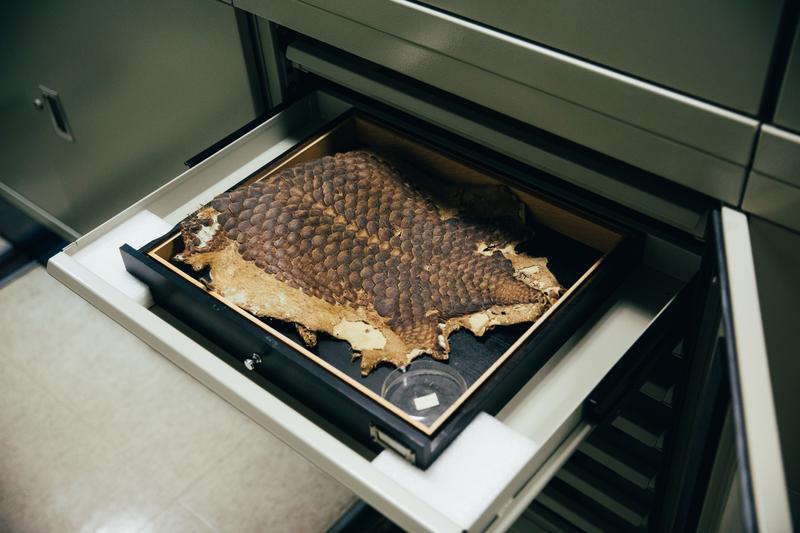
Chao was the first to conduct field research by interviewing 71 hunters, merchants, and manufacturers. Through comparing his research data and import-export statistics, Chao estimated the period between the 1950s and the 1970s to be the peak of pangolin leather processing in Taiwan. 5,000 pangolin skins were processed each month, which amounted to 60,000 Taiwanese pangolins killed every year.
"The roughly processed pangolin leather were piled directly inside the factory. When I went for an interview, I saw the pieces of leather stacked even taller than a person," Chao recalls.
When the leather factories purchased pangolin skins from the hunters, the scales were often still attached. The factory workers would soak them in medicinal water to separate the scales from the skin, then sell those to Chinese herbal stores. Large, undamaged pangolin skins could be manufactured into leather bags, while the damaged ones or the tails could still be made into wallets, belts and high heels - nothing went to waste.
Chao took us to the specimen collection at TFRI, where the staff found a pangolin skin purchased decades ago. Painted in black dye, the pangolin's skin reflected a muted sheen under the lamp. Its short limbs, long head, and tail laid flat as if it was crawling for mercy; its head still had traces of its scales, stripped violently before its death.
"Taiwan did rough processing before selling the leather to the United States and Japan for reprocessing; these countries were accomplices in the system as well," Chao says.
The TFRI also owns an intricate pangolin specimen, which was a popular home decor among the Japanese, because they believed pangolins brought good fortune. The Taiwanese manufacturers used to hire specialists to turn the smaller pangolins into specimens by first replacing the internal organs with cottons, then painting a layer of antiseptic. Each specimen had cost around NT$ 10,000.
The leather factories, Chao says, had learned to create pangolin specimens and leathers from the Japanese; even their earliest leather manufacturing techniques had come from Japan.
In Chao's research, he estimated that for each pangolin sold, a hunter could earn the equivalent of one-to-three weeks worth of pay. Pangolin hunting had become a popular gig for quick cash. A Yilan-based part-time hunter had said to Chao, "During those years, almost everyone was going after pangolins."
Pangolins can only give birth once a year. During the massive hunting era, the Taiwanese pangolin population decreased drastically. Residents used to spot them in their kitchens, farm fields, and even cemeteries. When Chao conducted his interviews in 1989, a pangolin dealer had said that "only a dozen were caught each year." By this time, Pangolins were no longer neighbors to the residents, but a legendary, rare species.
Taiwan's leather industry not only threatened the livelihood of local pangolins, but also brought tragedy upon the pangolins in its neighboring countries. The massive hunting era ravaged the Taiwanese pangolin population, which led to a scarcity in supplies. Many leather factories resorted to foreign imports because of the increasing material cost and a higher cost of labor during the 1980s. They had purchased pangolin skins from Southeast Asian countries like Thailand, Indonesia, and Malaysia, at an even larger volume of at least 10,000 skins per month.
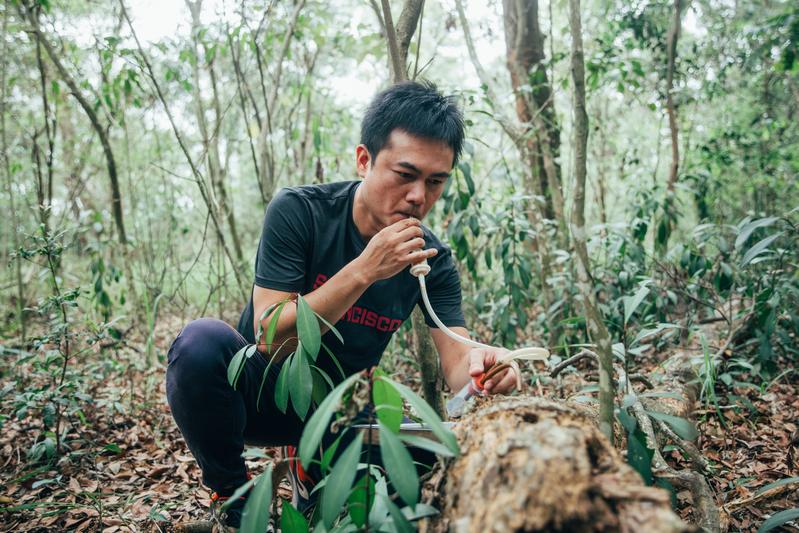
Taiwanese pangolin exports declined, but the demand from Taiwan's domestic market still existed. Mountain product and herbal stores insisted on selling pangolin meat and scales. In the 1980s, over 2,000 pangolins were sold by these stores annually, says Hsun Ching-Min (孫敬閔), a PhD candidate in Bioresources at NPUST.
A turning point came with the 1989 Wildlife Conservation Act. The legislation stated that animals with a conservation status were prohibited from hunting and trading. Pangolins were among the first to be enlisted as a protected species.
The enactment of the Wildlife Conservation Act did not represent a leap in the people's or the government's mindset for wildlife conservation. In reality, lots of Taiwanese people still purchased wildlife products. The law was only established as a response to international pressure.
Pei Chia-Chi(裴家騏), director of NPUST's Wildlife Conservation Institute, describes Taiwan's wildlife trade in the past as "out of control." Taiwanese not only trafficked orangutans, but also consumed bear bile and bought ivory. International environmental groups and governments had consistently pressured Taiwan to give up its notorious practices, eventually led to the 1989 Wildlife Conservation Act.
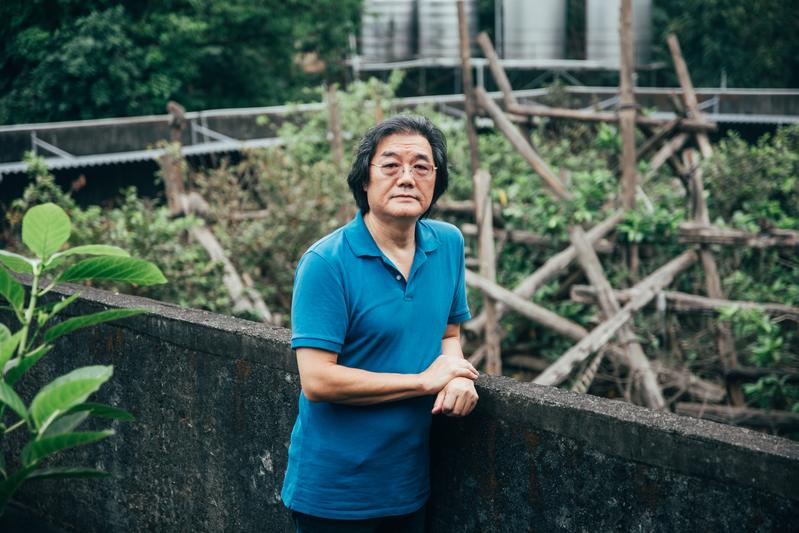
Before the Wildlife Conservation Act, the Taiwanese government had issued bans on wildlife poaching and trading in 1972. Many ignored the ban until the first wildlife conservation law was issued.
The Pelly Amendment was the last-ditch attempt for Taiwan to rectify its mistakes. International environmental groups had not ceased to monitor Taiwan after the 1989 Act -- the Environmental Investigation Agency (EIA) and other groups had revealed Taiwan to be a culprit in trading rhino horns and tiger bones in 1992. Two years later, the US government invoked the Pelly Amendment, imposing an embargo against Taiwan.
The Pelly Amendment is a domestic law in the United States. In 1967, the US government established the Fishermen's Protective Act to protect American fishermen's rights internationally. In 1971, the Pelly Amendment was added to Section 8 of the Act, authorizing the right to prohibit fish imports from countries that violated the fishery conservation program. Later, the Pelly Amendment was expanded to include all fish and endangered or threatened wildlife species.
Since the United States is a leader in global commerce, any nation imposed with the Pelly Amendment would face tremendous economic losses. The Amendment has become a great tool for international environmental groups to persuade the US government to restrict animal trafficking. Japan's sea turtle trade and Iceland's whaling practice have both been regulated by the pressure exerted from the Pelly Amendment.
Dependent on international commerce, Taiwan could not afford the trade restrictions imposed by the Pelly Amendment. In addition to increasing the penalty on the Wildlife Conservation Act, all the ministries poured efforts into forming a Wildlife Conservation Investigation Team. The National Police Agency selected six elite officers to establish a team of forest police, specializing in wildlife poaching and trafficking.
Tsai Wen-Cheng was selected in the first group of forest police. "I had solved 50 cases alone," he says. Every mountain product shop, bird street, and herbal medicine store was screened, Tsai says, even his photo was displayed in one of the businesses.
Besides doling out severe punishment, Tsai often exchanged experiences with local government officials and prosecutors. It was the first time Taiwan had poured national resources into fighting against illegal wildlife trade.
Pei says, the period after the Pelly Amendment was imposed, Taiwan has clamped down animal trafficking to a point where many people thought the policy was too harsh. However, it was effective in putting a stop to wildlife smuggling, and the United States had lifted the embargo in 1995.
The Taiwanese government's tough policy execution played a significant role in banishing the island's infamous name "Diewan". What pushed Taiwan to a world-leading status in conserving pangolins, though, was the local residents in Luanshan.
The police officers in Luanshan are not only responsible for arresting criminals, but also play the role of "pangolin nannies." Back in March 2019, the current chief police officer Hu Sung Chun-Jen (胡松俊仁) told us, "Two weeks ago, a pangolin broke into a resident's home and was sent to our police station. I ran into 2 more when I was patrolling last week: one was digging a hole, another was a baby - perhaps they didn't know how to be cautious."
Pei states that, the wild pangolins in Luanshan have a population density of 12.8 per 100 hectares, perhaps the highest in the world. When the pangolin population increases, so do their chances of coming into human contact. In collaboration with the Luanshan police station and the local Ministry of Agriculture, NPUST has set up a report system to monitor lost or injured pangolins. The police or the ministry staff would first send photos of a captured pangolin to NPUST for the university researchers to determine if it needs medical treatment or a shelter. If it is simply lost, a staff would place the pangolin back to where it was found.
"Now all the residents know that if they run into pangolins, they have to send them to the police station or report to the Ministry of Agriculture," Yuan says with a satisfied smile.
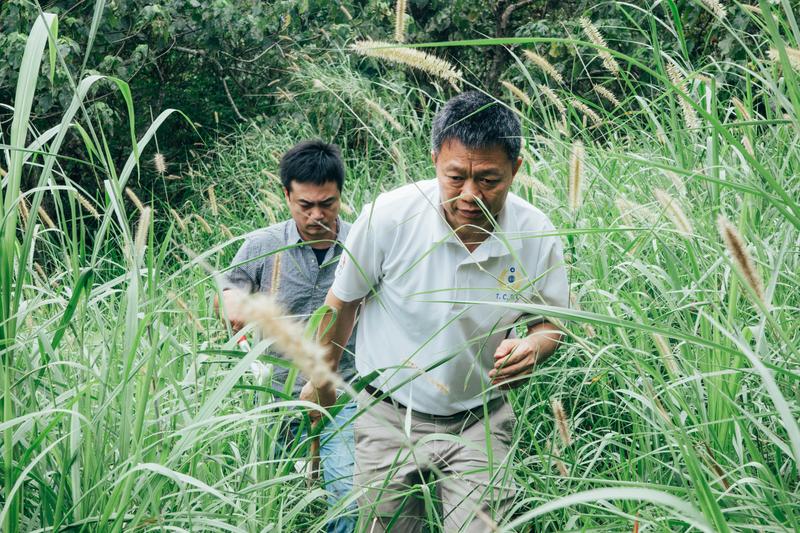
The former chief police officer has been the mastermind behind Luanshan's pangolin conservation since 2007. When he realized that pangolins only reacted to danger by rolling into a ball, he decided to protect the defenseless animal. His goal was to develop ecotourism in Luanshan through pangolin conservation.
When Yuan hosted the first pangolin seminar, the residents mocked his ambition and asked questions like what they could benefit from protecting this animal.
"Pig knuckles are available everywhere in Taiwan, but people specifically visit Wanluan for this dish. Pangolins are disappearing around the globe -- if we can conserve the species, the whole world will come to Luanshan for it," Yuan answered.
With Yuan's persistence and incoming funds, the residents were finally convinced. In 2008, Luanshan established its first pangolin patrol team with support from the community development association. NHK, Japan's public broadcaster, even came to interview the community and donated money for the wood-carved pangolin statue placed in front of the Luanshan police station.
Although the pangolin patrol team was dismissed 5 years ago due to a lack of funding, pangolin conservation has been embedded within the Luanshan tribal culture. Even the bathroom sinks in the Luanshan Elementary School are now in the shape of pangolins, reminding the children about the importance of conservation.
"If we don't act on it now, the next generation will only get to know pangolins through images like how we see dinosaurs now, and that will be our generation's fault," says Yuan.
Conservation awareness has sprouted not only in Luanshan. In 2016, the Xiulin Township in Hualien, the east coast of Taiwan, had mistakenly listed pangolins as one of the species in its request for the annual hunting festival, sparking a resident uproar. The two local aboriginal tribes - Wenlan(文蘭) and Tongmen(銅門) - emphasized that the pangolin was never a target within their hunting tradition. The Tongmen Tribal Association even left the following statement: "In the end, we're the people who best understand this piece of land, and it is our responsibility to protect the natural resources here."
In fact, Taiwan in its early period did not have the habit of using or eating pangolins. Some aboriginal tribes, like Kanakanavu(卡那卡那富族) in Kaohsiung, held a lot of respect for pangolins because legend says that pangolins have rescued their ancestors by digging burrows for them. In Taichung's Nantung District, the early settlers had discovered a gold pangolin, which was regarded as a symbol of good luck. Residents believe that if the pangolins are still in hibernation during the Dragon Boat Festival, they will suffer from a poor harvest. Hence, on the day of the festival, they have a tradition of kicking around the floor in wooden clogs in hopes of waking the pangolins who might be asleep underground.
Pangolins have stayed alongside humans in various forms of myths and folklore. Commercial greed, however, disintegrated the traditional society's respect for nature. Many are now seeking the lost spirit of coexistence between humans and wildlife.
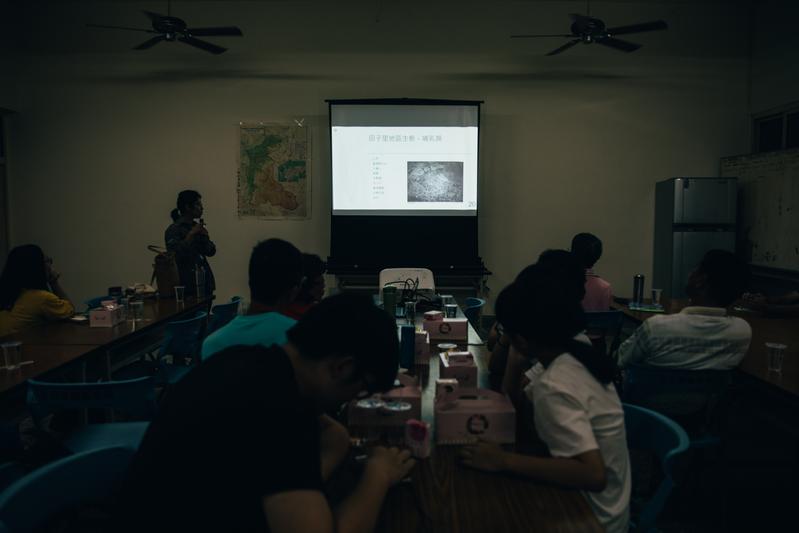
In the past half-century, Pangolin conservation has become a proud accomplishment for Taiwan, but such progress can be reverted unless the efforts continue. In January 2018, Taiwanese customs seized a cargo in Kaohsiung Port, which contained 3,880 frozen pangolins that were gutted and stripped of their scales. The cargo that had been imported from Malaysia and reported to customs as sardines is now under the investigation of Kaohsiung District Prosecutors Office.
In 2015, the Coast Guard Administration found 5 frozen, skinned pangolins in the home of a turtle smuggler. A few residents in the countryside have also discovered pangolin traps in a private plantation. Pei worries that pangolins might be smuggled to China through the same route as the yellow-margined box turtles, another endangered species.
Wu Sheng-Hai, a life science professor at the National Chung Hsing University, has been a longtime activist in wildlife conservation. Two years ago, he started to collaborate with the Tianzi Village in Zhushan, a small town in the center of Taiwan, to promote community conservation and set up a patrol team. In their spare time, the residents attend Wu's lectures on the characteristics of animals like pangolins, Chinese ferret-badgers, and masked palm civets. They also learn about the protocol of reporting cases of poaching while often commenting on how they have already seen these animals around.
The director of the Lotted Cheerful Community Development Associate Chen Teng-Ke (陳登科) says many places in Taiwan have pursued development for the sake of profit. "But communities like Taomi Eco Village have earned their reputation through ecotourism. Preserving the environment is something we ought to do."
Through his decades of experience in wildlife rescue, Wu genuinely believes that conservation efforts must begin within the local community. "Having conservationists tour every district to promote conservation awareness is one way to do it, but they're not the people living in the community every day," he says. Only when the locals embrace the idea of conservation can they rescue wildlife animals on the frontline.
(To read the Chinese version of this article, please click: 從年出口6萬張穿山甲皮,到保育模範生——台灣穿山甲保育之路 )
深度求真 眾聲同行
獨立的精神,是自由思想的條件。獨立的媒體,才能守護公共領域,讓自由的討論和真相浮現。
在艱困的媒體環境,《報導者》堅持以非營利組織的模式投入公共領域的調查與深度報導。我們透過讀者的贊助支持來營運,不仰賴商業廣告置入,在獨立自主的前提下,穿梭在各項重要公共議題中。
今年是《報導者》成立十週年,請支持我們持續追蹤國內外新聞事件的真相,度過下一個十年的挑戰。

